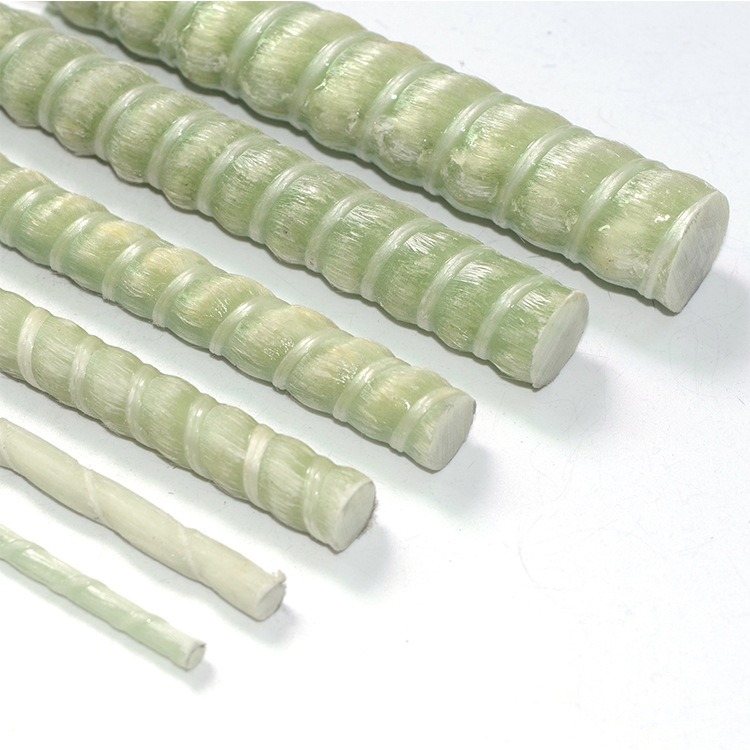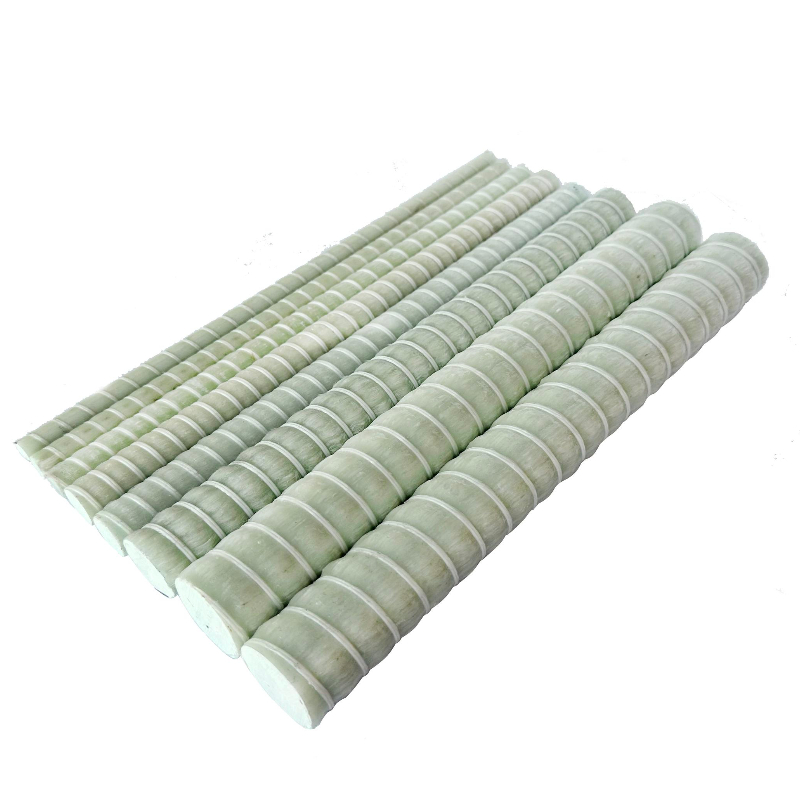Introduction
Fiberglass rebar has emerged as a significant innovation in the field of construction materials. As infrastructure demands evolve, engineers and builders are continually seeking materials that offer superior performance while reducing long-term costs. Fiberglass rebar, also known as Glass Fiber Reinforced Polymer (GFRP) rebar, presents an alternative to traditional steel reinforcement. This article explores the efficacy of fiberglass rebar, examining its properties, advantages, and practical applications in modern construction.
Properties of Fiberglass Rebar
Fiberglass rebar is composed of high-strength glass fibers embedded in a resin matrix. This composition imparts unique mechanical and chemical properties that differentiate it from conventional steel rebar. The material exhibits excellent tensile strength, comparable to or exceeding that of steel, while being significantly lighter. Additionally, fiberglass rebar is non-corrosive, non-magnetic, and possesses a low thermal conductivity.
Mechanical Strength
The tensile strength of fiberglass rebar typically ranges between 600 MPa to 1200 MPa, depending on the manufacturing process and the resin used. This strength enables it to perform effectively in structural applications where high tensile loads are present. Its lightweight nature—approximately one-quarter the weight of steel—facilitates easier handling and reduces transportation costs.
Corrosion Resistance
One of the most significant advantages of fiberglass rebar is its resistance to corrosion. Unlike steel, which can rust and degrade over time when exposed to moisture and chemicals, fiberglass rebar remains unaffected by such environmental factors. This property extends the lifespan of concrete structures, particularly in harsh environments such as marine applications or areas exposed to de-icing salts.
Advantages Over Steel Rebar
When considering Fiberglass Rebar as an alternative to steel, several advantages become apparent. These benefits contribute to both the structural integrity and economic efficiency of construction projects.
Durability and Longevity
The non-corrosive nature of fiberglass rebar means that structures reinforced with it can have a significantly longer service life. This durability reduces maintenance costs and the need for repairs or replacements over time, offering substantial long-term savings.
Electromagnetic Transparency
Fiberglass rebar is electrically non-conductive and does not interfere with electromagnetic fields. This property makes it ideal for use in structures where electromagnetic interference must be minimized, such as hospitals, research facilities, or sensitive electronic installations.
Applications of Fiberglass Rebar
The unique properties of fiberglass rebar have led to its adoption in various construction sectors. Its application ranges from basic infrastructure projects to specialized engineering works.
Infrastructure Projects
In infrastructure, fiberglass rebar is used in bridges, highways, and coastal structures. For instance, in bridge decks and barrier walls, the material's corrosion resistance is crucial for longevity. Its use in coastal defenses protects against the harsh marine environment, reducing the impact of saltwater corrosion.
Mining and Tunneling
Fiberglass rebar is also utilized in mining and tunneling projects. Its non-conductive and non-sparking nature enhances safety in explosive atmospheres. Moreover, its use in ground support systems, such as soil nails and rock bolts, improves structural stability. For more information on applications in mining, consider exploring the role of Fiberglass Rebar in this sector.
Cost Considerations
Initial costs of fiberglass rebar can be higher than traditional steel rebar. However, when evaluating the total lifecycle cost, fiberglass rebar often proves more economical. The reduced maintenance expenses and extended service life contribute to cost savings over time. To understand the financial implications further, one might examine studies on how much Fiberglass Rebar costs in various applications.
Limitations and Considerations
Despite its advantages, fiberglass rebar is not without limitations. Its modulus of elasticity is lower than that of steel, which can result in larger deflections in certain structural elements. Design codes and construction practices are also more established for steel rebar, requiring engineers to be familiar with the specific considerations when using fiberglass rebar.
Design Adjustments
Engineers must account for the different mechanical properties of fiberglass rebar in their designs. This may involve adjusting reinforcement ratios or considering deflection limits in serviceability checks. Collaboration with material specialists can ensure that the benefits of fiberglass rebar are fully realized without compromising structural integrity.
Environmental Impact
The use of fiberglass rebar contributes to sustainability efforts in construction. Its long service life reduces the need for repairs and replacements, minimizing resource consumption over time. Additionally, the production of fiberglass rebar involves lower carbon emissions compared to steel, supporting environmental conservation initiatives.
Case Studies
Several projects worldwide have successfully implemented fiberglass rebar. For instance, in Australia, the material has been used extensively in infrastructure to combat corrosion issues prevalent in coastal areas. Detailed analyses of these applications can provide valuable insights into the practical benefits and challenges associated with fiberglass rebar.
Conclusion
Fiberglass rebar represents a significant advancement in construction materials, offering numerous benefits over traditional steel reinforcement. Its high tensile strength, corrosion resistance, and lightweight nature make it an attractive option for various applications. While initial costs may be higher, the long-term advantages often justify the investment. As the construction industry moves towards more sustainable and durable solutions, fiberglass rebar stands out as a material worth serious consideration.



























